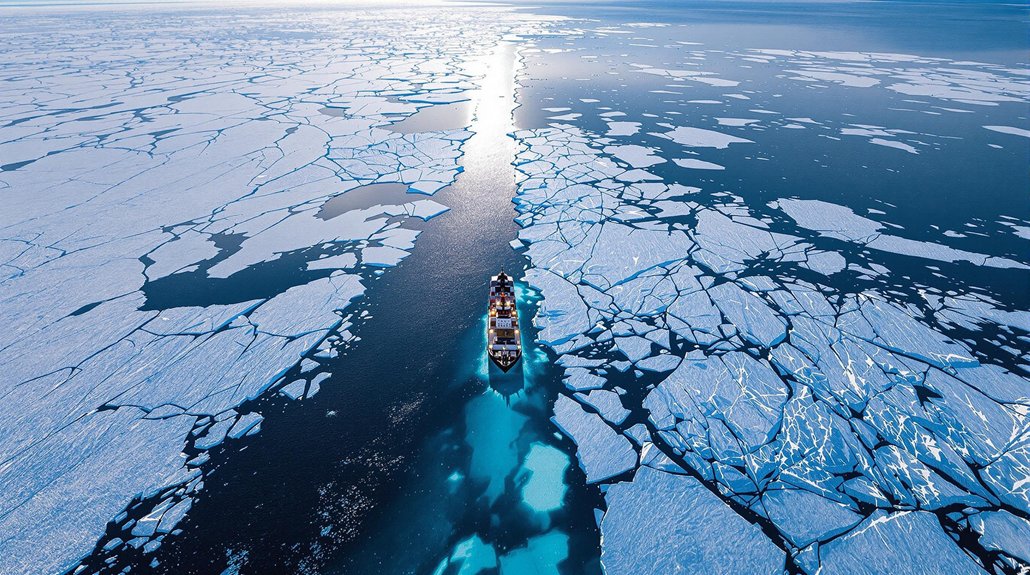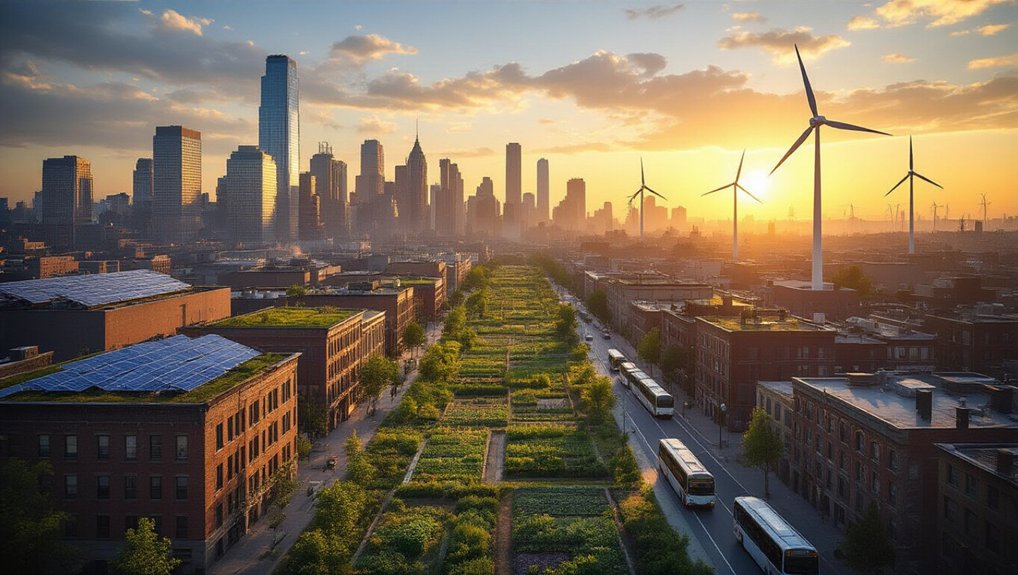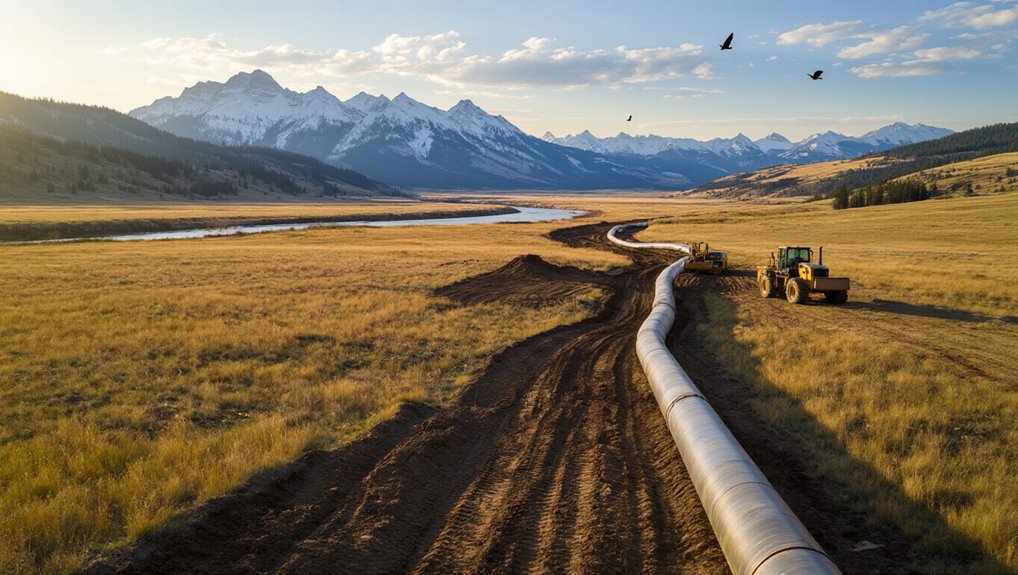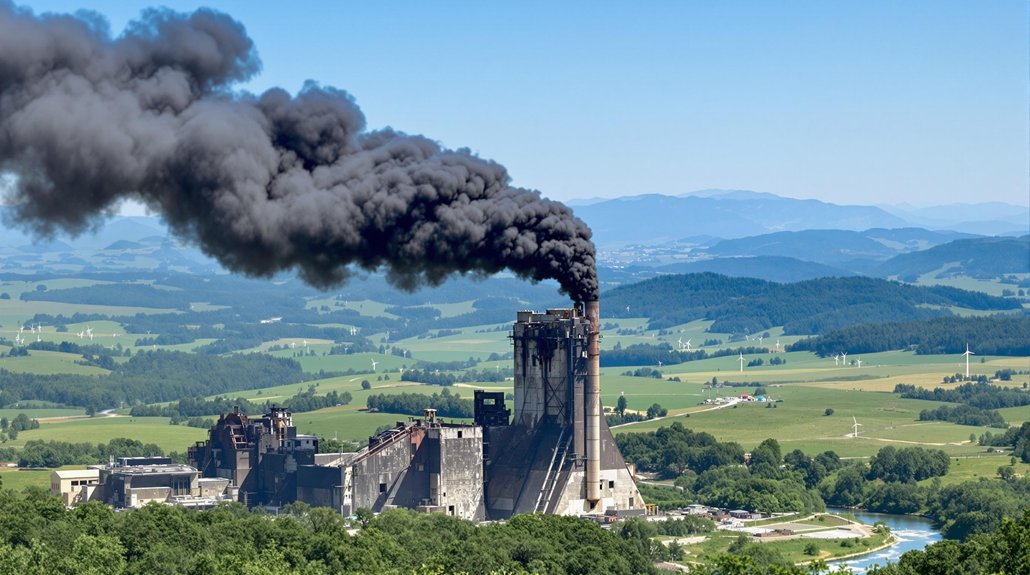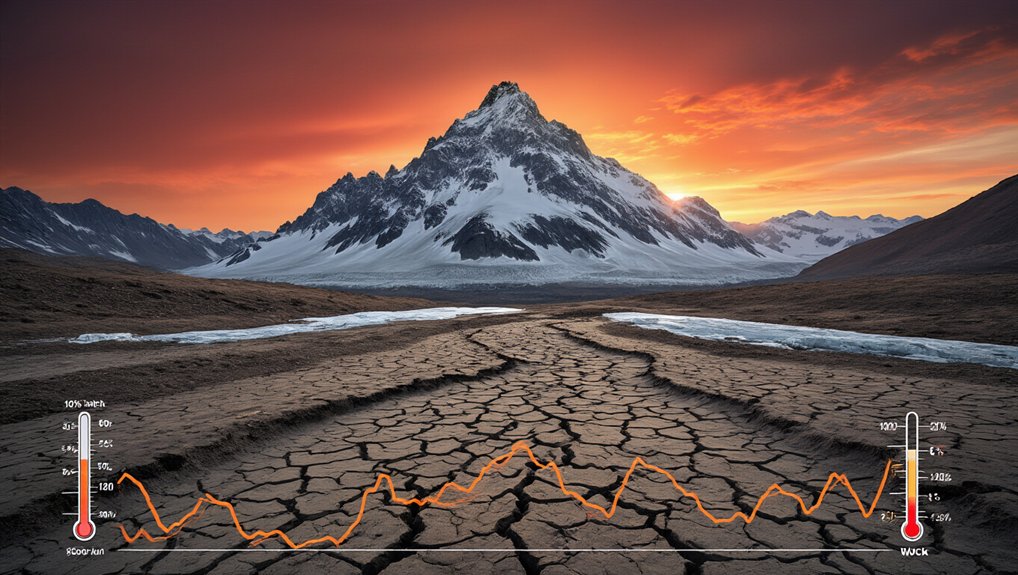Arctic sea ice shrank to 4.23 million square kilometers in 2023, the sixth-lowest extent in recorded history. Meanwhile, nations aren’t wasting any time capitalizing on new opportunities. Shipping companies eye routes that cut travel times by up to 20 days. About 13% of undiscovered oil and 30% of natural gas reserves lie beneath the melting ice. Convenient timing for industry, terrible news for polar ecosystems. The consequences stretch far beyond the Arctic’s boundaries.
Nearly every shred of Arctic sea ice is disappearing. The numbers don’t lie. In 2023, Arctic ice covered a measly 4.23 million square kilometers—the sixth-lowest extent in recorded history. Let that sink in. And 2025? Even worse. The maximum winter ice extent hit an all-time low at 14.33 million square kilometers, a staggering 1.31 million below the 1981-2010 average.
It’s heating up fast up there. Really fast. The Arctic is warming four times quicker than the rest of the planet. Four times! The last 17 years have given us the 17 lowest ice extents since satellites started tracking 45 years ago. Not a coincidence, folks.
Meanwhile, Antarctica isn’t doing any better. Record-low summer extent in 2023 at 1.79 million square kilometers, with ice growing 15% slower than average. Bad news bears—literally. Polar bears, seals, and entire ecosystems are getting squeezed as their icy homes melt away.
But some see dollar signs where others see disaster. Shipping companies are salivating over new routes like the Northern Sea Route. Cut 14-20 days off traditional shipping paths? Ka-ching!
And buried beneath that vanishing ice? About 13% of the world’s undiscovered oil and 30% of its natural gas. No wonder nations are circling like hungry sharks.
Tourism companies are already booking more cruises through newly ice-free waters. Nothing says “vacation” like witnessing environmental collapse firsthand! Scientists predict the Arctic will be completely ice-free in summer by 2035, opening even more opportunities for commercial exploitation.
The science is clear as melted ice. Rising greenhouse gases are heating the planet, melting ice earlier each spring, and delaying freezing in fall. Since 1979, the Arctic has experienced a 12.5 percent decrease in sea ice per decade. Less ice means less sunlight reflection, creating a feedback loop that speeds up warming even more.
The climate doom loop is in full effect: less ice, more heat, faster melt. Rinse and repeat.
As countries rush to plant flags on newly accessible Arctic territory, indigenous communities watch their traditional lifestyles melt away. Global weather patterns shift. Coastal communities prepare for rising seas. This environmental crisis contributes to the global health emergency that already causes over 8 million deaths yearly from air pollution.
The great Arctic melt is on. And it’s happening faster than anyone predicted.
